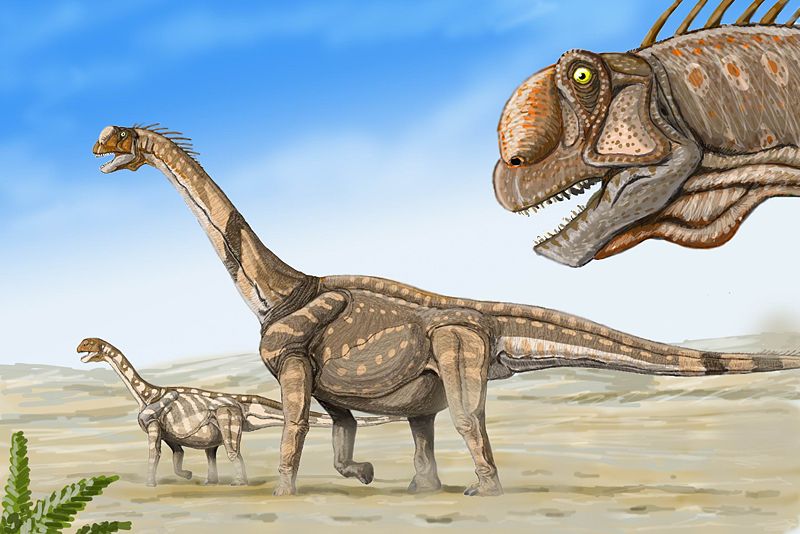We're open daily! View holiday hours
Science News
Where the Dinosaur Roam
October 27, 2011

In a world… 150 million years ago… a large herbivore roamed the Earth looking for sustenance and a place to call home...
Ok. No more movie voice. But where did the large sauropod Camarasaurus roam? A new paper in Nature may be closer to discovering the truth.
Scientists believe that some dinosaurs migrated seasonally for food, and now Henry Fricke and his colleagues at Colorado College may have the evidence—thirty-two Camarasaurus teeth.
Camarasaurus were enormous. With an average length of 50 feet, they ate about twice as much as today’s modern elephants—almost 1,000 pounds of food each day! As Fricke told Nature News,
They are huge—they would probably have eaten themselves out of house and home if they stayed in one place.
According to the fossil record, Camarasaurus inhabited the dry plains of western North America. The teeth the researchers sampled were all found in Wyoming and Utah, where the ancient seasonality record is pretty clear. ScienceNOW explains:
During the wet season, the prehistoric lowland basins of Wyoming and eastern Utah were flat, open habitats carpeted with ferns and stands of conifers. The researchers propose that the dinosaurs left this area at some point during the year, probably during the dry season, when the smorgasbord of tasty plants closed.
How did the researchers extract the evidence of movement from the Camarasaurus teeth? By measuring the ratio of isotopes within the enamel, New Scientist explains.
The ratio of isotopes is determined by the water the dinosaurs drank. [Fricke] found the ratio in teeth was different to that in carbonate rock from the floodplain—which carries the signature of the water it formed in. This suggests that Camarasaurus sometimes left the area.
Fricke and his team suspect the dinosaurs headed to higher, wetter ground seasonally, when the plains were dry, possibly traveling up to 180 miles.
The team plans to sample the teeth of other dinosaur species next. They have a hunch that where the herbivores traveled, the carnivores were close behind.
Image credit: Dmitry Bogdanov/Wikipedia